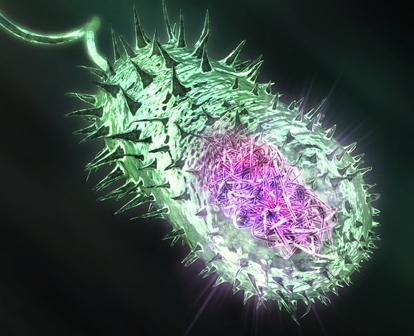Cholera bacterium kills other bacteria to steal their DNA
 London: Scientists have discovered the unconventional way the cholera bacterium stabs and kills other bacteria to steal their DNA, making it potentially more virulent.
London: Scientists have discovered the unconventional way the cholera bacterium stabs and kills other bacteria to steal their DNA, making it potentially more virulent.
Cholera is caused when the bacterium Vibrio cholerae (V cholerae) infects the small intestine. The disease is characterised by acute watery diarrhea resulting in severe dehydration.
Scientists from the Ecole Polytechnique Federale de Lausanne, Switzerland, have now demonstrated that V cholerae uses a tiny spear to stab and kill neighbouring bacteria - even of its own kind - and then steal their DNA.
This mechanism, known as "horizontal gene transfer," allows the cholera bacterium to become more virulent by absorbing the traits of its prey.
Melanie Blokesch at EPFL found how V cholerae uses a predatory killing device to compete with surrounding bacteria and steal their DNA. This molecular killing device is a spring-loaded spear that is constantly shooting out.
This weapon is called the "type VI secretion system" (T6SS) and is known to exist in many types of bacteria.
When V cholerae comes close to other bacteria, the spear punches a hole into them, leaving them to die and release their genetic material, which the predator pulls into itself.
This spear-killing, predatory behaviour is triggered by the bacterium's environment. The cholera bacterium naturally lives in water, such as the sea, where it attaches onto small planktonic crustaceans. There, it feeds on the main component of their shells: a sugar polymer called chitin.
When chitin is available, V cholerae goes into an aggressive survival mode called "natural competence." When in this mode, V cholerae attacks neighbouring bacteria with its spear - even if they are of the same species.
Blokesch's lab tested different strains of the bacterium from all over the world, most of which have been implicated in the 7th cholera pandemic, which began in Indonesia in the 1960's, spread rapidly to Asia, Europe, and Latin America, and still affects populations today.
The researchers grew these bacteria on chitin surfaces that simulated their natural habitat on crustaceans.
They found that the tiny spear is not only part of V cholerae's natural survival system, but it also contributed to the transfer of genes that could make the bacterium more resistant to threats, even to antibiotics.
"Using this mode of DNA acquisition, a single V cholerae cell can absorb fragments containing more than 40 genes from another bacterium," said Blokesch.
The importance of this study lies in the fact that horizontal gene transfer is a widespread phenomenon in bacteria, and it contributes to the dispersal of virulence factors and antibiotic resistances, researchers said.
In addition, the chitin-mediated activation of the spear-killing device most likely renders the bacterium more dangerous to patients when they ingest it, as this molecular spear might also kill protective bacteria in the human gut.
The study is published in the journal Science.--- PTI